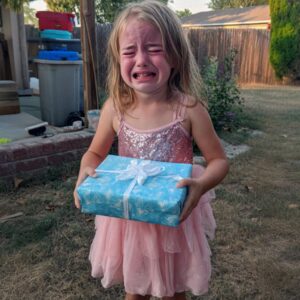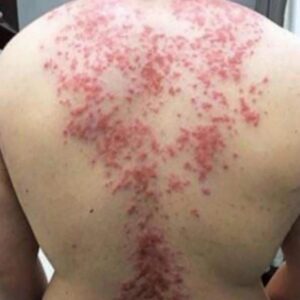Understanding the Threat of the Spotted Lanternfly (Lycorma delicatula): What You Need to Know and How to Act Fast
In recent years, one invasive species has steadily become one of the most concerning threats to both natural ecosystems and agricultural productivity across the United States. The spotted lanternfly, scientifically known as Lycorma delicatula, poses a serious risk as it rapidly spreads, damaging a wide range of plants—from economically important crops to venerable trees that define our landscapes. This article offers a comprehensive examination of the spotted lanternfly, detailing its origin, biology, impact on both natural and cultivated environments, and the immediate actions required to halt its destructive progress.
I. Introduction
A. The Emergence of an Invasive Menace
The spotted lanternfly first appeared in Pennsylvania in 2014, marking the arrival of a species that has since become synonymous with invasive ecological damage. Often described as an uninvited guest, the spotted lanternfly has spread aggressively, threatening the balance of native ecosystems and causing significant economic losses in the agricultural sector. This pest is known for its voracious appetite and ability to disrupt critical plant functions, ultimately weakening and even killing its hosts.
B. The Urgency of Swift Action
Experts agree that early detection and rapid response are crucial when dealing with invasive species like the spotted lanternfly. Due to its rapid reproduction and the distinctive damage it causes, any sighting of this pest should prompt immediate action. Not only does the insect jeopardize the health of individual plants and crops, but it also significantly stresses entire ecosystems by overwhelming native species and diminishing biodiversity. Public awareness and prompt management interventions are essential to control its spread and mitigate long-term environmental and economic impacts.
II. The Biology and Identification of the Spotted Lanternfly
A. Taxonomy and Native Origins
The spotted lanternfly, Lycorma delicatula, is native to regions of Asia and was inadvertently introduced to the United States. The species’ successful adaptation and rapid spread in Pennsylvania have provided a cautionary example of how invasive organisms can establish themselves far from their native habitats. Once introduced, the lanternfly exploits favorable conditions in new environments, often outcompeting local species and altering ecological balances.
B. Physical Characteristics and Developmental Stages
One of the keys to managing any invasive species is knowing how to identify it. The spotted lanternfly is relatively easy to spot due to its distinctive appearance:
-
Adult Appearance:
Fully developed spotted lanternflies typically measure about one inch in length and are about one inch wide. Their wings are initially gray with a brownish background accentuated by numerous black spots. When in motion, the vibrant red and black patterns on the underside of their wings become especially prominent, making the insect unmistakable to the casual observer. When the insect is at rest, however, its wings fold in a manner that renders its coloration more subdued. -
Nymphal Stages:
Young lanternflies, known as nymphs, exhibit a markedly different appearance compared to their fully mature counterparts. They have black bodies highlighted by white spots—a trait that helps differentiate them from other common insects. As nymphs progress through several developmental stages, they gradually acquire the red hues that signal their approach to adulthood. -
Specialized Mouthparts:
Like many sap-sucking insects, the spotted lanternfly is equipped with needle-like mouthparts designed to pierce plant tissue and extract plant fluids. This feeding behavior not only deprives the host plants of essential nutrients but also predisposes them to additional stresses and diseases.
III. Ecological and Economic Impacts
A. Impact on Native Ecosystems
The feeding habits of the spotted lanternfly have significant repercussions for plant health. When the lanternfly extracts sap from its host plants, these plants are weakened considerably. This reduction in vigor leaves the plants more vulnerable to secondary stresses such as disease, poor soil conditions, and adverse weather. One immediate consequence of the feeding process is the production of honeydew—a sugary secretion that is highly sticky and acts as a growth medium for sooty mold. Sooty mold, a type of fungus, forms a dark, adhesive layer on the surfaces of plants. This film not only interferes with photosynthesis by blocking sunlight but also further deteriorates the overall health of the plant.
B. Agricultural Challenges
The agricultural sector has borne a significant brunt of the spotted lanternfly’s invasion. Crops and fruit orchards, including those producing grapes, pears, and hops, have experienced declines in yield and overall quality because of the insect’s feeding. The aggressive consumption of sap by the lanternfly reduces the plants’ ability to produce fruit and leaves the entire system weakened. Infestations have been linked directly to decreased agricultural output, leading to a notable economic impact on regions where these crops are grown.
Farmers have been forced to adapt to this invasive threat, often resorting to aggressive management and pest control strategies. Despite these efforts, the rapid spread of the species has created challenges in managing its population effectively. In order to protect crops and reduce economic losses, early detection and immediate action are paramount.
C. Environmental Disruption and Loss of Biodiversity
Beyond the direct impacts on agriculture, the spotted lanternfly poses a broader threat to environmental stability. As the insect feeds on a diverse array of plants, it disrupts the intricate balance of ecosystems. The reduction in plant health can lead to cascading effects on other wildlife, including insects, birds, and mammals that rely on healthy vegetation for food and habitat. The ecological consequences extend to altering soil quality and reducing the overall biodiversity of affected areas. In regions where the lanternfly has become established, the introduction of these pests has forced changes in the structure and function of local ecosystems.
IV. Identification and Monitoring of the Spotted Lanternfly
A. Visual Identification Techniques
Given its distinctive coloration and body structure, the spotted lanternfly is generally identifiable by both professionals and amateur naturalists. The following features are key in identifying the insect:
-
Wing Patterns:
The adult lanternfly’s wings are a combination of gray and brown with an abundance of black spots. When in flight, the underwing reveals a striking red and black pattern that stands out against the normal drab background of the top side. -
Size and Structure:
Measuring roughly one inch by one inch, the size of the lanternfly makes it noticeable. The distinctive shape of its folded wings also aids in identification, as does its posture when at rest. -
Nymph Characteristics:
Early stages present a more subdued palette with black bodies featuring white spots. Recognizing these developmental stages is crucial for early detection, before the insect reaches maturity and begins causing significant damage.
B. Monitoring and Reporting
Active monitoring of the spotted lanternfly is critical for managing its spread. Gardeners, farmers, and community members are encouraged to check for signs of infestation regularly. Areas most at risk include:
-
Firewood, Furniture, and Vehicles:
Egg clusters of the spotted lanternfly, which appear as muddy streaks or clumps, can easily attach to objects such as firewood, outdoor furniture, or cars. These egg masses should be diligently inspected, especially before transporting goods or personal belongings from one region to another. -
Outdoor Structures:
Since lanternflies are known to lay their eggs on a variety of outdoor surfaces, it’s important to examine structures, trees, and rocks in your immediate vicinity. This level of vigilance is necessary, particularly when moving items between states where the pest is known to exist.
Reporting sightings of the spotted lanternfly to local environmental authorities can aid in mapping its spread and coordinating control efforts. Community engagement in monitoring programs is a vital component of any comprehensive strategy to counteract the insect’s invasion.
V. Strategies for Managing and Controlling the Spotted Lanternfly
A. Physical Control Measures
If you identify the presence of the spotted lanternfly on your property, immediate physical intervention is crucial to limit further damage. Two effective measures include:
-
Manual Removal:
Directly squashing or physically removing lanternfly nymphs and adults can provide an immediate reduction in their numbers. While manual removal may seem labor-intensive, it is one of the most accessible methods for quickly mitigating an infestation. -
Egg Mass Elimination:
Lanternfly eggs can be identified by their appearance—muddy, streak-like clusters on various surfaces. Removal of these egg masses is highly recommended to prevent future generations from establishing. Scraping the eggs into a container containing a disinfectant solution such as alcohol, hand sanitizer, or diluted bleach ensures that the eggs are effectively neutralized.
B. Collaborative Community Efforts
The fight against the spotted lanternfly is not one that can be fought in isolation. Cooperation between individuals, local governments, and agricultural agencies is essential for a coordinated response. Reporting sightings and eradication efforts enables authorities to track the spread of the pest and allocate resources effectively. Additionally, public awareness campaigns can educate communities on how to identify the insect and take prompt action to remove it before it proliferates further.
VI. Importance of Early Detection and Timely Intervention
A. Preventing Widespread Damage
The key to managing the invasion of the spotted lanternfly lies in early detection and rapid response. By addressing the issue promptly, communities can significantly reduce the long-term impact on both native ecosystems and agriculture. Every day counts in preventing a small infestation from evolving into a widespread ecological crisis.
B. Preserving Ecosystem Integrity
Beyond the economic implications, the health of natural ecosystems is at risk from unchecked lanternfly populations. Healthy ecosystems are the backbone of environmental stability—they support biodiversity, improve air and water quality, and provide vital resources to all living organisms. Interrupting the spread of invasive species like the spotted lanternfly preserves this delicate balance.
C. Mitigating Economic Loss
For farmers and agricultural stakeholders, the arrival of the spotted lanternfly can be devastating. Infestations directly lead to reduced crop yields and diminished product quality, affecting local and even national economies. By acting swiftly when sightings occur, growers can prevent massive economic loss and ensure that agricultural production remains robust and sustainable.
VII. The Global and Local Significance of Invasive Species Management
A. A Challenge for Global Biodiversity
The issue of invasive species such as the spotted lanternfly is not limited to one country or region. Globally, invasive species pose one of the greatest threats to biodiversity. They displace native species, alter habitats, and can lead to irreversible ecological changes. Efforts to manage invasive species require international cooperation and adherence to best practices in environmental management.
B. Local Community Action as a Model for National Response
Local communities are on the front lines of managing invasive species. Citizen involvement in monitoring, reporting, and eradication efforts is essential for the success of broader national strategies. By remaining vigilant and acting quickly, local stakeholders can serve as models for effective environmental stewardship. Community-based initiatives not only preserve local natural resources but also contribute valuable data that helps shape policy decisions at higher levels of government.
C. Long-Term Strategies for Sustainable Management
Looking to the future, it is clear that short-term interventions must be coupled with long-term strategies that promote sustainable environmental management. Research into biological control agents, improved pest management technologies, and ecosystem restoration are all critical components of an integrated approach to combat invasive species. By fostering collaborations among scientists, policymakers, and the public, a more resilient approach to invasive species management can be developed—one that not only addresses immediate threats but also builds a foundation for long-term ecological health.
VIII. Conclusion
The spread of the spotted lanternfly (Lycorma delicatula) is a clear and present danger to both natural ecosystems and the agricultural industry. As an invasive species, it rapidly undermines the health of its host plants, causing severe economic and environmental damage. Its arrival in Pennsylvania in 2014 marked the beginning of a rapid expansion that has since threatened a wide array of plants and trees. The insect’s unique biological traits—from its distinctive wing patterns and evolving nymph stages to its needle-like mouthparts—make it both recognizable and formidable.
Because the spotted lanternfly compromises plant health through sap extraction and promotes the growth of sooty mold via its sticky honeydew, it simultaneously undermines photosynthesis and plant vitality, contributing to a decline in both crop production and natural vegetation. The economic losses experienced by farmers—compounded by the broader ecological impact—make early detection and prompt intervention critical. Homeowners, farmers, and community leaders alike must remain vigilant, conducting regular inspections for these insects and the egg masses they leave behind on outdoor surfaces.
In dealing with this invasive threat, immediate physical control methods, such as manually removing the insects or scrubbing egg masses off surfaces with disinfectant solutions, are essential in the short term. Furthermore, coordinated community efforts and robust reporting systems play a pivotal role in monitoring the insect’s spread and informing effective intervention strategies. The conservation of natural ecosystems and the mitigation of agricultural losses depend on our collective ability to act swiftly and decisively.
Ultimately, the fight against the spotted lanternfly is about protecting our environment, sustaining agricultural productivity, and preserving biodiversity for future generations. It is imperative that individuals and communities take responsibility and work together to combat this invasive species. By doing so, we not only safeguard local ecosystems and economies but also contribute to a larger, global effort to manage invasive species responsibly. Early intervention, community cooperation, and long-term sustainable management strategies represent our best hope for minimizing the impact of the spotted lanternfly and ensuring that our natural resources remain healthy and vibrant.
In conclusion, if you see a spotted lanternfly in your home or on your property, act immediately. Effective measures taken promptly can significantly reduce damage and help contain the spread of this invasive pest. Our environmental health—and the future of our agricultural productivity—depends on swift, coordinated action. Stay informed, remain proactive, and do your part to protect our shared natural heritage.






